“Well, they’re not really plums,” my husband, Lượng, said about the fruit that grew on the trees in the back of his house in the Mekong Delta. When he got to America, another Vietnamese immigrant had called them “plums,” and Lượng didn’t know any other English name. An Internet search on their Vietnamese name, “mận“, brought up images of bell-shaped fruit. Depending on where you are, they’re referred to as wax apples, water apples, rose apples, cloud apples, mountain apples, royal apples, java apples, Jamaican apples, love apples, or water guavas. They also are called bellfruit.
I’ve never eaten bellfruit, but Lượng says they taste partly like an apple with a hint of the sourness and bitterness of a crab apple. Botanically, though, they’re an edible berry. The flavor is in the outside. Inside, tasteless soft spongy flesh holds two to three large seeds. The blossom side of the bellfruit has a cavity in the middle.
Some bellfruit are reddish on the outside like an apple (mận hồng đào—rose red bellfruit). Others can be white, green, crimson, or dark purple. Most of these colors come from new cultivars selected to have sturdier skin to withstand the trip to market. The most common type of bellfruit when my husband grew up was mận da người, or bellfruit the color of human skin. When I asked Lượng its color, he pointed to his skin. He also said it can be paler with a greenish-yellow tint. The skin of this type of bellfruit is extremely delicate.
Human skin bellfruit used to be everywhere in the island Lượng grew up in. In a story in Catching Shrimp with Bare Hands, Lượng sits in a bellfruit tree while relatives bury his older cousin and a cluster of human skin colored bellfruit drops down and imprints on the wet cement of the grave. On a recent trip to Vietnam, however, Lượng didn’t see any human skin color bellfruit. People don’t plant them much anymore since they don’t withstand transporting.
One day Lượng came home with a cluster of red berries he spotted on a tree near the school in our neighborhood. “This is what mận are like, only smaller,” he told me.
It was hard to believe a miniature version of a tropical fruit tree was down the street. The cluster of berries turned out to be from a Eugenia Uniflora. Both bellfruit and eugenia are in the myrtle family. Even the bellfruit flowers look like those on the eugenia.
At least I was able to taste the eugenia berries. Lượng says they taste like bellfruit except they’re more intense and don’t have the mellow sweetness of the larger fruit.
It’s unlikely I’ll get a chance to try bellfruit here. Bellfruit only grow in the tropics. They don’t last long once picked because their thin skin lets them get easily bruised and dehydrated. I’ll have to wait for my next trip to Vietnam to try one.
Photo credit: Luong La. Luong took the pictures of the rose red bellfruit in front of his cousin Tâm’s house in Giao Lọng, Vietnam in October 2015.
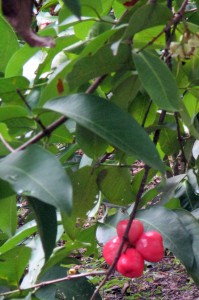
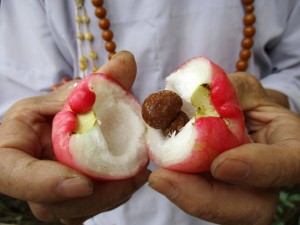
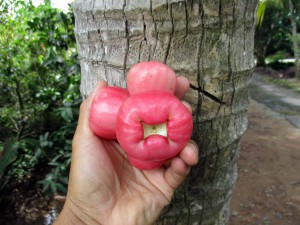
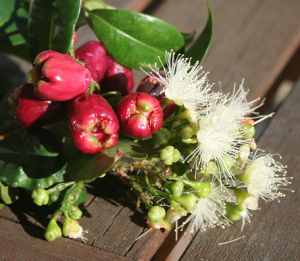
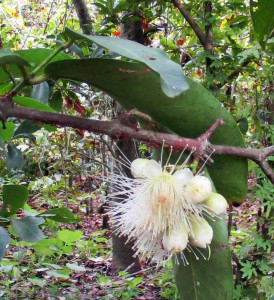



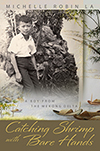
bmogcq
zzuvlv
0fd5un
hj5iye
khu2f6
jr4x4h